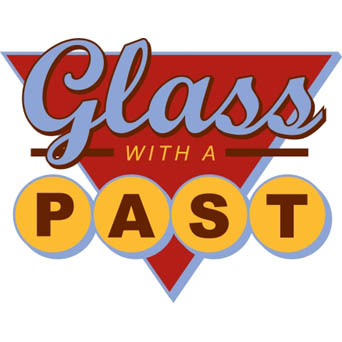 If you’re anything like me, you’ve been tempted more than once by the pretty vintage plates at thrift stores and estate sales. The good news is, some of them can be successfully used in glass fusing projects. To do that, you have to know a couple things:
If you’re anything like me, you’ve been tempted more than once by the pretty vintage plates at thrift stores and estate sales. The good news is, some of them can be successfully used in glass fusing projects. To do that, you have to know a couple things:
- Is the vintage dish tempered or not?
- What is the fusing temperature?
In this article, we’ll look at the first question. Of the four plates pictured, can you identify the tempered ones?
(The answer is at the end of the post) In the meantime, here are some clues to help you identify different types of vintage plates.
Edge thickness
 Notice the thin pink glass next to the much thicker clear and yellow glass. The thinness of the plate is an indicator that it is tempered. Tempering allowed manufacturers to make thinner, more economical plates using less glass.
Notice the thin pink glass next to the much thicker clear and yellow glass. The thinness of the plate is an indicator that it is tempered. Tempering allowed manufacturers to make thinner, more economical plates using less glass.
Scratches and chips
 Often vintage plates will be heavily scratched. They are, after all, vintage. These scratches look remarkably like the marks made when scoring tempered glass:
Often vintage plates will be heavily scratched. They are, after all, vintage. These scratches look remarkably like the marks made when scoring tempered glass:
And frequently, vintage dishes have chips in the edges. The chips are good news in a way, they can indicate the glass is not tempered.
Pattern detail
Often vintage dishes are pressed into molds, giving them a crisp and sparkly detail. Tempered plates can also be pressed (prior to tempering), but the detail isn’t nearly as crisp. Compare the detail of this red plate:
 Where the edges are smoothed over, particularly the raised squares in the upper right. Now, look at this clear plate:
Where the edges are smoothed over, particularly the raised squares in the upper right. Now, look at this clear plate:
 Crisp edges and corners. Now look at this yellow one:
Crisp edges and corners. Now look at this yellow one:
 More crisp lines and square corners.
More crisp lines and square corners.
Labeling
in the 50’s and 60’s, most tempered glass dishes were being made by Arc International (fascinating history, if you’re a glass history buff) located in France. So, lots (not ALL) of tempered plates have a label on them. Some have a name too, some just say FRANCE:

 So, do you have enough clues about how to identify tempered plates to tell which are tempered? (There’s another way, using polarized film or a polariscope to see the internal stress of the glass)
So, do you have enough clues about how to identify tempered plates to tell which are tempered? (There’s another way, using polarized film or a polariscope to see the internal stress of the glass)
The pink one and the red one are tempered. The clear and the yellow are soda lime glass and can be used for fusing.
The next step in the process is to determine fusing temperatures, which is covered in a separate article: Fusing with Mystery Glass
My recommendation is to do low heat projects, slumping or cutting and fire polishing to maintain the pattern. Here are some ideas:
 This is a votive made with a clear round vintage plate. I added some mica to the pattern just for fun. Notice how stretched out the pattern is on the base. These plates behave more like art glass than bottle glass, so use an art glass slumping schedule (or use the recycled slump schedule and subtract 100 degrees from the top temperature and the annealing temperature).
This is a votive made with a clear round vintage plate. I added some mica to the pattern just for fun. Notice how stretched out the pattern is on the base. These plates behave more like art glass than bottle glass, so use an art glass slumping schedule (or use the recycled slump schedule and subtract 100 degrees from the top temperature and the annealing temperature).
 Jewelry is another option, this bracelet was made from the yellow vintage plate, cut into shape, with the edges ground and then formed around a bracelet mandrel. Pendants are quite easy too, cut the glass into shapes, grind the edges, fire polish and add a bail. The patterns do the heavy lifting, and you’ll find that everyone has a fond memory of Grandmother’s candy dish.
Jewelry is another option, this bracelet was made from the yellow vintage plate, cut into shape, with the edges ground and then formed around a bracelet mandrel. Pendants are quite easy too, cut the glass into shapes, grind the edges, fire polish and add a bail. The patterns do the heavy lifting, and you’ll find that everyone has a fond memory of Grandmother’s candy dish.
Related Articles:
Related Products

